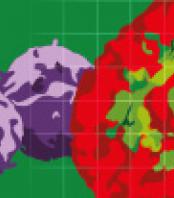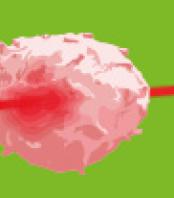Luminex offer a comprehensive range of innovative flow cytometers, including the Imaging flow cytometers.

Automated microscopy and Spatial Proteomics
Real-time, label free cell analysis
Nano and micro particle analysis

Accelerate to discover
Related topics
Theranostics: From Mice to Men and Back

Jun 25, 2024
Recorded webinar
Presenters: Prof. Dr. Ken Herrmann and Prof. Dr. Katharina Lückerath – Moderator: Hannah Notebaert
Orion 2024 AACR poster: 17-plex single-step stain and imaging of cell Lung Carcinoma

Jun 21, 2024
RareCyte Orion is a benchtop, high resolution, whole slide multimodal imaging instrument. A combination of quantitative...
New release now available: Cytek Amnis AI v3.0 Software

Jun 17, 2024
The new Cytek Amnis AI v3.0 image analysis software features an integrated transfer learning algorithm, an option to...
Cytek webinar: Imaging Flow Cytometry for Chromosomal Assessment in Hematological Malignancies

Jun 7, 2024
In this webinar, we will describe a new innovative approach we developed that resolves these limitations. The method...
Hypoxia in the Tumor Immune Microenvironment (TIME)

Jun 6, 2024
Thursday, 11 July 2024, 16:00 CET | 10:00 EST
Zaver M. Bhujwalla, PhD
X-RAD 320 for irradiation therapy during quantifying study for in vivo collagen reorganization

Jun 5, 2024
Quantifying in vivo collagen reorganization during immunotherapy in murine melanoma with second harmonic generation...
Use of MRI and microCT to evaluate gene therapy for the treatment of discogenic back pain

Jun 4, 2024
MRI images were obtained using the 9.4T Bruker BioSpec system, equipped with 40 mm 1H quadrature volume resonator, and...
Exosome-Mediated Delivery of Small Molecules, RNA & DNA for Development of Novel Cancer Therapeutics

Jun 3, 2024
Disha Moholkar of University of Louisville's Gupta Lab
Tuesday, June 11, 2024, 6:30 PM...

Nov 4, 2019
Extracellular vesicles (EVs) such as exosomes (70 nm – 160 nm in diameter) and microvesicles (100 nm – 1,000 nm diameter) can be harvested from cell-culture supernatants and from all bodily fluids. Current standard techniques to visualize, quantify, and characterize EVs are electron microscopy, nanoparticle tracking analyses, and dynamic light scattering. To further characterize and discriminate EVs, more exact high-throughput technologies to analyze their surface are highly desired. Although conventional flow cytometry is limited to measuring particles down to approximately 300 nm – 500 nm, a relatively new flow-cytometric method called “imaging flow cytometry” allows for the analysis of EVs smaller than 300 nm. This webinar on Wednesday, June 8, 2016 (6 pm CEST) will introduce viewers to the challenges, limitations, and pitfalls of flow cytometry-based EV analysis, and to the imaging flow cytometry methodology. Also covered will be techniques for analyzing exosomes, microvesicles, and apoptotic bodies in unprocessed samples, how imaging flow cytometry can be used to evaluate or reevaluate EV isolation techniques, and the advantages and disadvantages of using this method.
Related technologies: Imaging flow cytometry
Get more info
Brand profile
Luminex offer a comprehensive range of innovative flow cytometers, including the Imaging flow cytometers.
More info at:
https://www.luminexcorp.com/